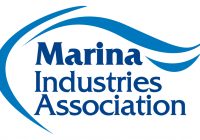Last month a historic milestone was reached with the New Zealand European Union Free Trade Agreement (NZ-EU FTA) coming into force after years of negotiations. This agreement marks a significant leap forward for New Zealand businesses, providing enhanced access to the expansive European market. With 91% of tariffs on current goods trade eliminated from day one, rising to 97% within seven years, and estimated tariff savings projected to reach $110 million after the same period, the NZ-EU FTA sets the stage for future trade.
For New Zealand, the European Union (EU) stands as its fourth-largest trading partner, with two-way trade worth $20.2 billion in 2022. The elimination of tariffs and the creation of additional quota access, offer greater opportunities for businesses looking to capitalise on this landmark agreement.
The NZ-EU FTA will provide immediate tariff eliminations for a range of exported goods from New Zealand. This should level the playing field for New Zealand exporters.
The NZ marine export sector is poised to benefit from this trade agreement with the reduced trade barriers and improved market access.
- Manufactured products: almost all tariffs eliminated on day one. Overall tariff savings of $9.1 million per year are estimated for manufactured products, including plastics, aluminium, organic chemicals and machinery.
New Zealand consumers will also benefit from the elimination of tariffs on all EU goods entering New Zealand, eliminating an estimated $74 million in import duties per year. This benefit includes industrial products (e.g., motor homes, plastics, furniture, kitchen appliances and other machinery, motorboats, and other vessels).

Peter Busfield, CEO NZ Marine commented; “With regards to the NZ / EU (and also for recent NZ/UK) free trade agreement, we are seeing some importers promoting the small $$ saving that consumers can benefit from. However, the saving is only 3 to 5 % and this is within the range we see the exchange rate movements move from month to month so whilst positive we do not really see it as a game changer.
Also, the existing stock of new imported boats in NZ will have already paid the duty. The reduced duty into the EU on some marine equipment such as NZ designed/ made / exported sails is of good advantage to NZ as these items had higher duty rates prior to the new duty-free environment.”
Matters to consider before benefitting from the NZ-EU FTA
While the NZ-EU FTA offers great potential, businesses need to take specific measures to fully capitalise on the advantages as the agreement does not automatically apply. Each consignment must comply with the FTA’s requirements, and proper notification must be made to the relevant authorities. Here are some essential considerations for New Zealand businesses aiming to take advantage of the trade agreement:
- Accurately determine the appropriate tariff classification for goods to qualify for the preferential tariff treatment under the NZ-EU FTA. The EU system uses ‘Combined Nomenclature’ (CN) codes for identifying and classifying goods. CN codes are 8 digits – the first 6 digits from the HS code (Harmonized Commodity Description and Coding System), with two more numbers added on the end to provide more detailed classification within the EU.
- Satisfy the relevant rules of origin under the NZ-EU FTA, which may involve complexities. For example, goods sourced from countries other than New Zealand and/or the EU may still be eligible if they undergo production processes within either location. Conversely, goods sourced solely from New Zealand and/or the EU may not qualify if they transit through another nation with additional operations performed.
- Comply with the restrictions regarding New Zealand and the EU’s Geographical Indications (GI). This means that only EU producers can use the protected EU geographical indications on relevant products imported and sold in New Zealand, while New Zealand wine producers will benefit from protected GIs for wines exported and sold in the EU. Some of these protections will be phased in over 5 to 9 years, but eventually New Zealand producers will need to avoid GI terms such as “sherry”, “port” and “feta” on their products.
- Consider seeking advance rulings from the customs authority of the importing country to obtain certainty about the origin of specific goods or their tariff classification. These advance rulings generally remain effective for up to three years unless modified or revoked.
- Comply with the declaration of origin rules, either through self-declaration from the producer or exporter or by providing documentation supporting the importer’s knowledge of the goods’ origin.
- Evaluate the need to renegotiate contracts with EU counterparts to address relevant matters such as origin-related obligations and entitlements in case the authorities challenge the goods’ origin.
- The NZ-EU FTA presents a prime opportunity for New Zealand businesses to grow and expand their operations. Consulting companies like Deloitte can help in various ways to ensure that your business can harness this agreement effectively, whatever the stage of your business.
by MaryAnne Edwards, GMBA Australia and New Zealand











